14 Nights / 15 Days

Bhutan Gonphu-Pangpang Eco trail tour on this memorable 15 days will take you through Western urban cities to the remote villages in Zhemgang, central Bhutan. Exploring historic fortresses, immersing you in the history of this ancient kingdom. Get through high passes like the Pele La and Dochu La with spectacular mountain views, and gaze over deeps valleys carved out by clear mountain rivers.
You will have opportunities viewing silent fir tree forests, scenic nature, view wild elephants, rhino, deer, riverine aquatic species and enjoy colorful birds watching walk, on elephant back expedition and boating/rafting in Manas river accompany by trained nature guide.
Enjoy this pristine environment with stay at the Eco Camp in Bhutan and interacting with friendly people in traditional Bhutanese dress, and delicious local food all awaits on this fascinating adventure to a world few people see. Immerse yourself in another world. Come to Bhutan and travel beyond destination.Both International & domestic Flight fares.
Visa fees USD 40.
Travel insurance coverage.
Drinks/Beverages.
Communication charges, laundry, tips, porters at hotels.
Other expenses of personal nature.
Tour Money transfer Fee.
The flight into the Himalayas reveals scenic and breathtaking views of the Himalayan Mountains. Weather permitting; you will be able to see Mt Everest (8848m, 29,198ft).
Your guide will greet you on arrival and drive you to the hotel. Later, visit Rimpung Dzong, one of the many Bhutanese Dzongs constructed as administrative buildings, monasteries and temples. They are carefully and thoughtfully designed, and strikingly beautiful. Rimpung Dzong, known as the 'fortress of the heap of jewels' is located in the picturesque setting of the Paro valley and was built in the time of the dynamic spiritual and political leader Zhabdrung in 1644. Once a year, as part of the Tsechu festival, one of the oldest Thongdol (gigantic scroll paintings) is ceremonially unfurled here. Also visit Kichu Lhakhang Monastery, one of the two most sacred and oldest temples in Bhutan. It was built in 7th century by Tibetan King Songtsen Gampo.
In the morning, take the three hour return hike to Taktshang Monastery (Tiger's Nest), Bhutan's most recognisable cultural icon perched 800m (2640ft) up a seemingly sheer cliff. Although it was tragically and mysteriously consumed by fire in April 1998 it has now been restored to its former glory. It is believed that in the 8th century, the great tantric master Guru Rimopche/ Padmasambhava (2nd Buddha) flew on the back of a tigress to the site where the monastery now stands. The hike takes in gentle and steep slopes, and some made and unmade stone. For a small fee per person, you can elect to ride a horse to the top. Later, take a stroll around town to see how the locals live. There is the option to stay overnight, bathe and eat at a local farmhouse. Otherwise, overnight in Bhutan's capital Thimphu, a one and a half hour drive.
We begin in the bustle of the weekend markets. Held every Friday, Saturday and Sunday, it is a must. People crowd the stalls every day, dressed in full colour and gathered to meet and to barter.
Later visit, Simtokha Dzong, built by Zhabdrung Ngawang Namgyal, one of the greatest builders of Dzongs in Bhutan. We will also visit others, such as the Tashichho Dzong or 'Fortress of Glorious Religion'. Built in 1641 by Zhabdrung Ngawang Namgyel, it houses the secretariat building, the throne room and the office of the king, and the central monk body. There is much to do in Thimphu, such as visiting the Memorial Chorten, dedicated to the father of modern Bhutan, King Jigme Dorji Wangchuck. You must not miss the Kuenselcholing View Point, which takes in some truly breathtaking views of the entire city of Thimpu, where you will see the largest Buddha in the world under construction.
In the morning, drive two hours towards Punakha/Wangdue, and to a pass known as Dochula (3140m, 10362ft) from where a beautiful panoramic view of the Himalayan mountain range can be seen, especially on clear winter days.
The beauty of this place is further enhanced by the Druk Wangyal Chortens, 108 stupas built by the eldest Queen, Her Majesty Ashi Dorji Wangmo Wangchuck. Later, you can visit the Botanical Garden just below Dochula Pass, where there is a significant collection of rhododendrons.
Take a morning hike to Bhutan's most elaborate temple, Khamsum Yuley. This fascinating temple was built by the Queen Mother of the Fifth King, with aim of bringing universal peace to the world. The best of the spiritual art works are painted on the inner walls. There are also paintings of Buddhist teachers and tutelary deities of the country, making this a great temple in which to study the symbolic meanings from frescoes and sculptures. We will also visit the Punakha Dzong (fortress), built in 1637 by Zhabdrung, remarkably located between the rivers of Mo Chu and Pho Chu - the female and male rivers.
Before driving 2 hours to Gantey, we hike 30 minutes across valleys and through villages to the Chimi Lhakhang (Temple of Fertility), built in 1499. Notice the wooden phalluses hanging from the four corners of the houses along the way, plus phalluses painted on the walls, to drive away evil spirits.
This morning we walk the Gangtey Nature Trail, which takes approximately half a day, or 2 hours at a quicker pace. This is one of the shortest, but most beautiful of Bhutan's nature trails. It leads through green grass valleys, flanked by pine trees on either side, and winds through some villages, rivers and Crane roosting grounds. Along the way, you have the opportunity to visit the magnificent Goemba (Monastery). In the afternoon drive 5 hours to Trongsa, with visits to the Gangtey Monastery and the Black Necked Crane Observation Centre on the way.
Start your morning by visiting Trongsa Dzong, built by in 1644 by Chhogyel Mingyur Tempa. The dzong dominates the horizon, dwarfing the surrounding buildings. Both the First and the Second King ruled the country from this Dzong. Trongsa Museum is situated strategically above the Trongsa Dzong, and served as the watchtower for centuries. The museum is equipped with state of the art technology and includes a media room where visitors can watch a documentary program on the history of the monarchy. Later begin the 5-hour drive to Gomphu via Zhemgang. The Gomphu Eco-camp is located in the forest just above the Gomphu Park Range Office. The facilities include two eco-lodges, two bathrooms and toilets, dining room, kitchen, water supply and camping facilities. The facilities are built using local materials such as wood and stone. Activities offered at the Eco-camp include birding, biking and hot spring baths.
You have the option of two hikes from Gomphu to Pangthang today: the traditional route, which takes approximately four and half hours, or the route along the motorable road, which takes about an hour. The road has a well-maintained slope and is much easier than the traditional route. (One can ride a bike from Gomphu to Pangthang along this road).
The eco-trail passes through mixed broadleaf forests and thick undergrowth with numerous birds such as barbets, hornbills, bulbuls, doves, woodpeckers and cuckoos. Stop for lunch at Mamung, which is approximately half way to Pangthang. Afterwards continue descending through the beautiful valley of small settlements to your destination on the banks of the Mangdi Chhu.
The trek from the Pangthang camp towards Shilingtoe follows the right bank of the Mangdi Chhu - overlooking Pangthang settlements and the river itself. The trail begins with a gentle descent and occasional short climbs. The entire trek will take about four hours and the last leg before reaching Shilingtoe Eco-camp is a climb of over half an hour. The trail is very rich for bird sightings with many birds such as thrushes, drongos, hornbills, partridges, pheasants, bulbuls, tree pies, barbets, eagles, fowls, and many more to be seen. Activities offered at the Eco-Camp include birding, treks to Bats Cave and to Limestone caves and hot stone baths.
Along the trail between Shilingtoe to Pangbang, birds such as bulbuls, barbets, thrushes, hornbills, kingfisher, cormorant, wagtails, trogons and many others can be seen. The hike from Shilingtoe to Changazam suspension bridge takes about 3 hours and passes by a religious cave, a bat cave and a twin waterfall (Lelang). The campsite at Pangbang is located at a place called Anilademba at the junction of the Mangdi Chhu and the Dangme Chhu. It is now connected by a motorable road to Panbang, which connects to the Indian Manas Tiger Reserve.
Attractions at Panbang Eco-camp include boating, river rafting, fly-fishing, elephant rides and wildlife watching. The Park Range Office at Manas coordinates these activities. In addition to enjoying the beautiful scenery while boating and rafting along the Manas River, one can see goral, capped langurs, cormorants and many other bird species.
Pangbang communities celebrate Tsechu - an annual religious festival on the tenth day of a month of the lunar Tibetan calendar - usually around October. Tsechus are large social gatherings, which perform the function of social bonding among people of remote and spread-out villages. Large markets also congregate at the fair locations, leading to brisk commerce. The focal point of the tsechu is the sacred Cham Dances - costumed, masked dances generally based on incidents from the lives of various saints
The trek between Pangbang- Norbugang will take approximately six hours and is the longest trek of all. Most of the birds sighted along the Shilingtoe-Pangbang eco-trail are also found along Pangbang-Norbugang eco-trail. The eco-camp at Norbugang is located at a place called Dorji Jadram. The road from Nanglam to Pangbang has connected recently. This road is also one of the entry and exit points to reach Royal Manas National Park. The five villages along the trail from Nanglam to Norbugang conduct Tsechus and among them the Tsechu at Nimshongborang village is unique and entertaining. It is held annually from 8 to 10th day of 5th Bhutanese month and from 9 to 10 day of 8th Bhutanese month. After Norbugang, one could also exit via Nanglam and Samdrupjongkhar.
This morning begin the 6-hour drive from Norbugang to Phuentsholing. Located in the southwest of Bhutan, Phuentsholing is known as the 'gateway to Bhutan' as it is the only land border that grants access to the country. It is approximately 170 kms east of the Indian airport at Bagdora, near Darjeeling, and 180 km from the capital city Thimphu, a drive of around 8 hours. Being the border town it has an Indian character and taste, though it maintains the Bhutanese way of living.
Right after breakfast, proceed to Paro, we will make our first stop on top of a low hill at Kharbandi, a small monastery situated in a garden of tropical plants and flowers, overlooks the town and surrounding plains of India was build by Royal Grandmother, Ashi Phuntsho Chhoden in 1967.
From Phuntsholing, the road winds north, over the southern foothills, through lush forested valleys and around the rugged north- south ridges of the inner Himalaya to the central valleys of Paro. There is one of the largest Hydroelectricity on the way, which is the biggest export from Bhutan. There is also chapcha pass (2800 Meters high/ 9,185ft) then Thimphu 2400 m high and is about 6 hours' drive.
Today, your guide will escort you to Paro Airport to bid you farewell. We hope your stay in Bhutan will be a memorable one. This introductory trip to Bhutan will impress you and make you want to come and see more of Bhutan in the future.
| No of pax | Age Limit | Price per pax (Rs) |
|---|---|---|
| Adult | Above 12 years | $ 3750 / Adult |
Warm Greeting, “kuzuzangpola”
the Bjoka Tours & Travels is a Government Accredited Inbound Tour and Travel Company in Bhutan. We are Established Company with Over 3 Years of Operational Experience in Bhutan Tourism Equipped with Experienced and Dedicated Team of Professionals. a Company with a Foundation of Professionalism and Integrity, Combined with Many Years of Experience in Organizing and Arranging Packaged and Custom Tours to Bhutan.
we Offer a Wide Range of Tour Activities that Will Give You An Experience On Culture, Adventure, Nature and Spiritual & Wellness like No other Destinations in the World. Our Tour Package Includes Accommodation in Minimum 3 Stars Hotel with Meals, Standard Transportation and Qualified Guide with Licensed from the Tourism Council of Bhutan. We also Provide Services like Visa Processing, Airline Ticketing for Our Clients and other Than the Tour Activities, We Organize Corporate and the Private Events.
our Company is Purely Motivated with the Interest and Appreciation On Bhutan that Our Visitors have Shown to Present Our Beautiful Country in Most Eloquent Ways and Improve Visitor Experiences, Which Ultimately Facilitates Us to Realize Our Mission of Contributing Towards Improving Bhutan as a Tourism Destination. Our Main Aim is to Make Our Client Stay in Bhutan a Delightful Experience.
thank for Choosing Bhutan Bjoka Tour & Travel. Read More...

 17D/16N
17D/16N
Bhutan Enchanting Tsechu-Festival Tour
Paro - Thimphu - Punakha - Wangdue Phodrang - Trongsa - Bumthang - Mongar - Trashig..
 12D/11N
12D/11N
Bhutan Wholesome Tsechu-Festival Tour
Paro - Thimphu - Punakha - Wangdue Phodrang - Trongsa - Bumthang
 8D/7N
8D/7N
Bhutan Prominent Tsechu-Festival Tour
Paro - Thimphu - Punakha - Wangdue Phodrang
 16D/15N
16D/15N
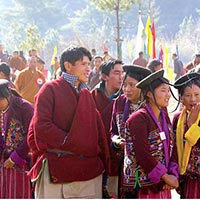 16D/15N
16D/15N
 12D/11N
12D/11N
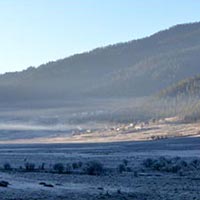 10D/9N
10D/9N
 12D/11N
12D/11N
 12D/11N
12D/11N
 15D/14N
15D/14N
New Delhi - Agra - Gwalior - Bhopal - Indore - Mumbai - Tikamgarh - Chhatarpur - Au..
 15D/14N
15D/14N
 15D/14N
15D/14N
 15D/14N
15D/14N
Chandigarh - Shimla - Manali - Dalhousie - Amritsar - Dharamshala
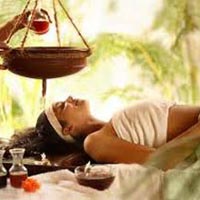 15D/14N
15D/14N
New Delhi - Haridwar - Rishikesh - Shivpuri - Agra - Jaipur
 15D/14N
15D/14N
 15D/14N
15D/14N
 15D/14N
15D/14N
 15D/14N
15D/14N
 5D/4N
5D/4N
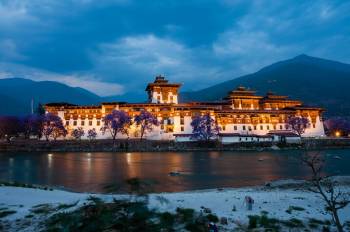 7D/6N
7D/6N
6 Nights/ 7 Days - Bhutan Happiness Tour
Punakha - Bumthang - Paro - Thimphu - Phobjik
 20D/19N
20D/19N
20 Days Land Package Country Tour BHUTAN..
Punakha - Paro - Phuntsholing - Bagdogra - Bumthang - Mongar - Trashigang - Trongsa..
 6D/5N
6D/5N
 4D/3N
4D/3N
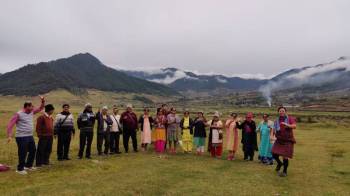 6D/5N
6D/5N
 7D/6N
7D/6N